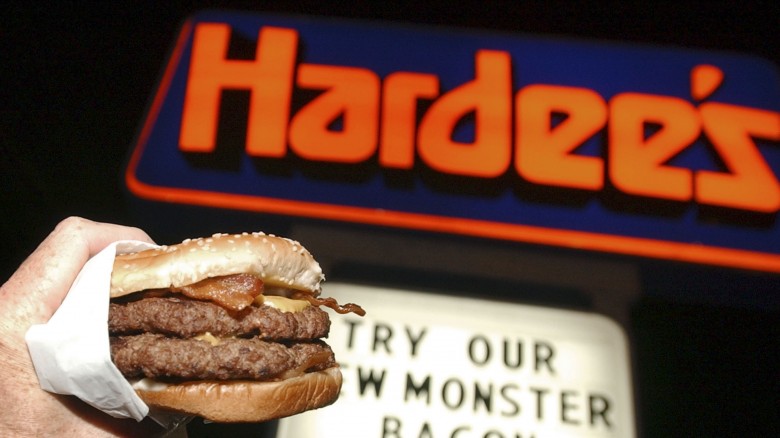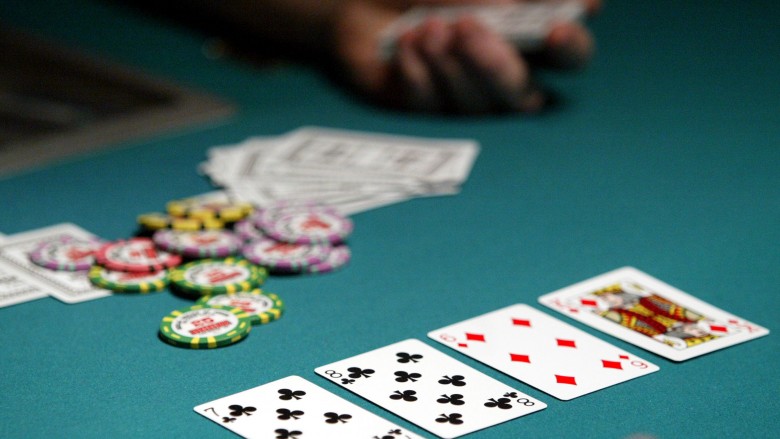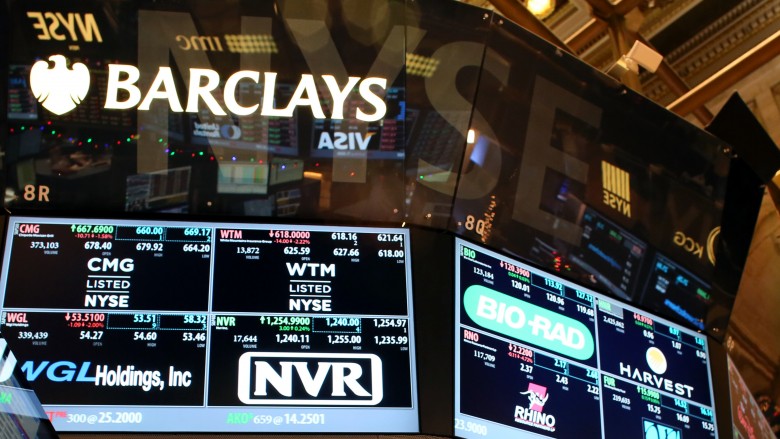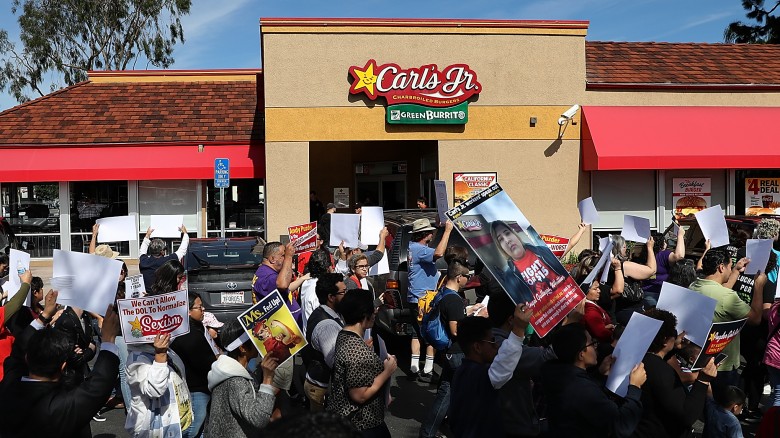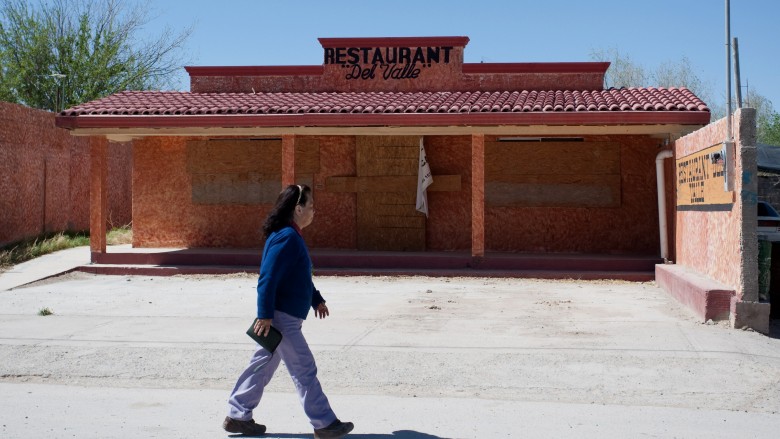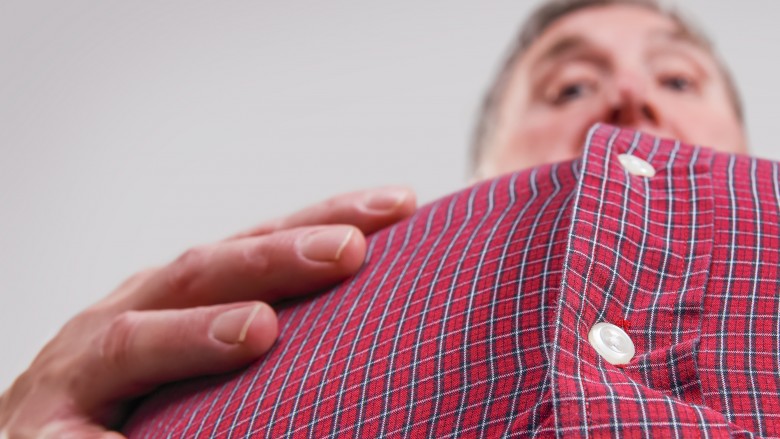Secrets Carl's Jr. Doesn't Want You To Know
Carl Karcher borrowed $311 against his car and used up his entire savings of $15 to open a hot dog stand in 1941. All these years later that hot dog cart is now a multi-million dollar enterprise consisting of over 3,000 stores. Carl's Jr. set a lot of trends out there in fast food land, including the first place where you paid for your food and then got it, which is the industry standard today.
Carl's Jr. is pretty open and honest, but there are still some things they'd rather keep under their giant gold star for safekeeping.
It's not the same has Hardee's, but it is
Ask anyone on the West Coast the difference between Carl's Jr. and Hardee's, and they'll give you an earful. You'll hear "they're nothing alike," despite sharing advertising nationally and the same website menu. So is this a branding thing, or is there a difference?
Carl's Jr. acquired Hardee's in 1997 for $327 million, and slowly introduced Carl's Jr. food into Hardee's. It was an effort to expand but at the same time keep the store name the same, as to not run off loyal Hardee's customers. There are some differences — most notably the fact that Carl's Jr. has salads, and Hardee's, not so much. Carl's Jr. slowly eradicated some Hardee's items, like the roast beef sandwich (which was actually pretty good!), making them even more similar. The two restaurants with one owner (CKE is the parent group) do not compete with each other; they split the nation in two with those poor slobs on the Upper East Coast getting neither brand.
If you really want to do your own taste test, the closest a Hardee's and Carl's Jr. are to each other is about 30 miles as the crow flies. It will take about an hour to drive between the two locations; from just inside the line in Arkansas (Hardee's) to Tahlequah, Oklahoma
Hardee's founder busted out early
Both Carl's Jr. and Hardee's began as family businesses. Wilbur Hardee opened Hardee's in 1960 after seeing McDonald's brisk business in North Carolina and thinking he could do the same. The original Hardee's did very well and Wilbur saw a Golden Arches-like expansion in his future. He took on partner Leonard Rawls to help expand, and that led to his friend Jim Gardner joining the team. The original deal said each man had equal say on the board in the direction of Hardee's — despite being named for Wilbur. That led to Gardner and Rawls out-voting Hardee two-to-one on everything, so he sold out early in the 1960s.
That was the story — Wilbur just sold out because the other guys didn't like his ideas — until Hardee self-published a book in 2000. According to his book, after a night of drinking, Hardee, Gardner and Rawls sat down to play poker. Hardee wasn't having a great run, but thought he had a good enough hand to bet his shares in the Hardee's company; and he lost. And with that, Gardner and Rawls had 51 percent of the company. So which story is true? Maybe a little of both. Gardner left Hardee's in 1967 to focus on politics, and Rawls remained with Hardee's until 1975 and then died in 1982 of heart disease. Hardee opened (and closed) a series of restaurants in North Carolina but never came close to anything like his eponymous chain. Hardee's changed hands a few more times until Carl's Jr. made the purchase in 1997 and took them where they are today.
Insider trading
Carl's Jr. ran into their own troubles in the 1980s. As McDonald's, Burger King, and Wendy's distanced themselves from the competition, regional chains like Carl's Jr. saw a dip in sales. And when you're a public company, dips in sales lead to drops in stock prices. There's one way to stay ahead of the profit loss — sell off your stock before the news hits. And unless you are a wizard, if you gained that information from nonpublic sources, that's called "insider trading." Which is exactly what Carl Karcher allegedly did.
In 1988, the Securities and Exchange Committee accused Karcher, son of the founder and Vice President of CKE, of passing information to his kids, sister, and son-in-law. The company stock was about to tank, and the horde sold stock right before the public announcement that saw the stock drop a whopping $4 a share. Karchner and family paid a little over $187,000 in fines to the SEC for their role in the scheme, but served no jail time.
They don't care if you don't like their ads
Even if you've never graced the inside — or driven thru — a Carl's Jr, you're probably familiar with their ad campaign. Since Duke and Sons figured out that putting provocatively clad women in their cigarette packs generated more sales (and that was 1885!) companies have used sexual imagery to sell products. Carl's Jr. turns that up to an 11.
Complaints litter the internet about supermodels and beautiful people shoving Carl's Jr. burgers in their mouths in a manner that's... well, let's just say inappropriate. Carl's Jr. has heard your complaints — and they have zero cares. CKE CEO Andrew Pudzer wants you to bellyache, "If you don't complain, I go to the head of marketing and say, 'What's wrong with our ads?'" he said. Pudzer claims sales go up when the ads run. There's an old adage that there's no such thing as bad publicity, and clearly that's Carl Jr.'s motto.
The fake hamburger ad
Carl's Jr. does care, however, that you actually believe that whoever is selling their burgers actually enjoys them — or at least doesn't pretend eat them. In conjunction with the Rams moving back to Los Angeles, Carl's Jr. employed star running back Todd Gurley to sell one of their burgers — the In-N-Out Double Double... er. California Classic (that was a Freudian Slip). Gurley bit into the burger with such force you'd think George Lucas directed it — because the burger was CGI (computer-generated imagery). Carl's Jr., as you know, doesn't care how you say their name, as long as you spell it right. They responded, "Hey, a lot of things in SoCal are enhanced." Stay classy, Carl. The semi-official explanation is that Gurley did many takes with a real burger, but they used CGI on the one they liked best. The internet loved it, as it went viral, so in the end Carl's Jr. won again.
The 1989 protests
If you're selling stuff and you take a political stand, you've got a chance at ticking off half your customers. It's a dual-edged sword; and more than a few companies have faced protests for political stances. Forgotten are the protests associated with Carl's Jr. in the late 1980s.
Carl's Jr. founder Carl Karcher supported anti-abortion candidates in the run up to state elections. That led to an organized protest in North Hollywood by pro-choice supporters. Things got a little hairy when conservative talk radio got wind of it and rallied a counter protest. That wasn't Carl's Jr.'s first brush with controversy — in 1978 Karcher supported the Briggs Initiative, a wildly unpopular proposition that would ban gays and lesbians from becoming teachers. Even Ronald Reagan voiced his displeasure with the initiative, but Karcher threw some money at it anyway. It didn't pass. Gay rights protesters successfully kept a Carl's Jr. off the campus of Cal State Northridge because of Karcher's support of the Briggs Initiative.
Taco De Carlos
Carl Karcher wasn't one to just sit on his laurels. Taco Bell had already expanded greatly in California in the 1960s, and Karcher saw an opportunity. In 1972, he opened Taco De Carlos, which would compete with Taco Bell in an unconventional way — by carrying stuff Taco Bell didn't sell. One item they carried was a California Burrito. The Taco De Carlos California Burrito was a traditional sounding burrito, with green chili in it — different from Taco Bell — and deep fried. If you're thinking that's a chimichanga, that's because it's a chimichanga. Taco De Carlos reached 17 stores by the late 1970s but eventually folded.
CKE could never shake their Mexican itch, and in 1994 co-branded with Green Burrito, a California Mexican quick-serve chain. In 2001, they bought the company outright. Green Burrito is the fourth largest taco chain in the US, thanks to their presence in Carl's Jr. And in case you think we're going color blind, we're not. In Hardee's, it's a Red Burrito. And the difference is the same as Hardee's and Carl's Jr. — which you know ain't much.
You better be hungry
Carl's Jr. prides itself on serving burgers in some sort of gastro-busting sizes. At least they have salads (but Hardee's doesn't). But let's just say you're watching your carbs and you want to go a bit lighter — Carl's Jr. has your back. You said you were watching just carbs, right? Good, because the Low-Carb 1/2 lb Thickburger checks in at 670 calories. You've still got over 1300 mg of sodium in that and 24 grams of saturated fat. The 1/3 lb Thickburger is a mere 450 calories, if you really want to go skinny. If you're trying to watch your calories and want a burger, your best bet is the Jr. Cheeseburger, which is just a tiny little cheeseburger that is still 330 calories.
Their breakfast is pretty bad, too
You might think you'll find healthier options if you arrive at Carl's Jr. before the lunch crowd, but you'd be wrong. Behold, the Breakfast Burger in all its glory. It's a bacon cheeseburger, with an egg (breakfast, get it?), and hash browns. Oh and ketchup, because eggs and ketchup — they're one of those people. If that seems like a hearty breakfast, it's probably because it's 830 calories! At 46 grams of fat, it's 71 percent of your daily recommended allowance of fat — might want a carrot for lunch just to smooth things out.
They put Cheetos on a burger
Restaurants will test market food regionally to see it's impact. No need to roll out that lobster and foie gras burger if your test market isn't buying it. Carl's Jr. tried a burger that was a bit different. It's still hip to take known brands and market them together, so Carl's Jr. tried a Flamin' Hot Cheetos Cheeseburger, featuring Cheetos. It's exactly what it sounds like, and according to some that tasted it, it wasn't half bad — a bit messy, but not bad. Unfortunately, for those that like mixing food groups, the Flamin' Hot Cheetos Cheeseburger didn't make the final menu. There's always a chance for a return, but as time expands from its 2015 market test the chances grow smaller by the day.
Carl's grandsons are a mess
CKE owns some Carl's Jr.'s, and franchises some as well. Obviously there are strict rules that apply to franchises, and nepotism isn't going to get in the way. Carl LeVecke, a franchisee and grandson of founder Carl Karcher, and his brother Jason, owned 80 Hardee's and 85 Carl's Jr. — which generated a lot of money for them and a lot of franchise fees for CKE. If they paid them, of course. CKE sued the brothers for $2.9 million in fees, but that's nothing, their own mother sued them for $100 million! They settled with mom in 2013— terms undisclosed. The brothers' business, Frontier Star, filed for bankruptcy in 2015. Jason put some of the blame on the government, claiming that of their 4,000 employees, 1,200 were busted by ICE in a sting operation. CKE alleged the LeVecke's ran a ponzi scheme, buying and selling property under people's noses. CKE is still attempting to extract money from the Chapter 11 company. Good luck with that, family or not.

